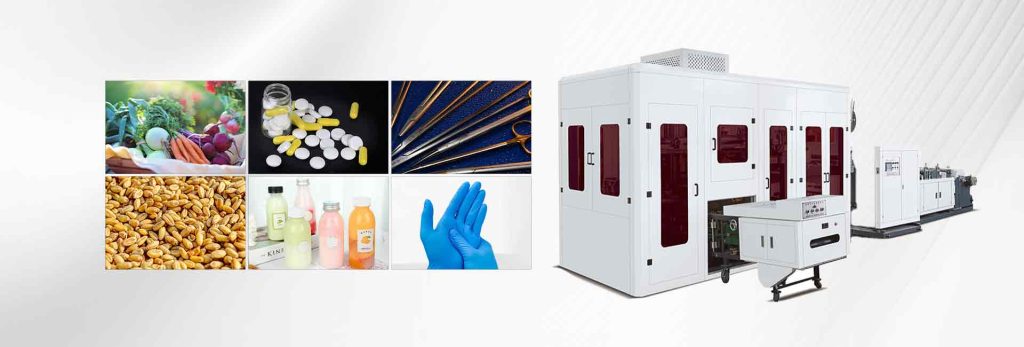Binder jetting is an innovative additive manufacturing (3D printing) technology that has gained traction across various industries for its versatility, efficiency, and cost-effectiveness. Unlike other 3D printing methods that rely on lasers or heat to fuse materials, binder jetting uses a liquid binding agent to join powder particles, layer by layer, into a solid structure. This unique approach offers distinct advantages, making it suitable for a broad range of applications. This article explores the primary uses of binder jetting, highlighting its potential to revolutionize manufacturing processes.
How Does Binder Jetting Work?
To understand the uses of binder jetting, it’s essential to grasp the basics of how it works. In this process, a printer head deposits a liquid binder selectively onto a powder bed. After one layer is printed, the powder bed is lowered, and a new layer of powder is spread on top. The cycle repeats until the desired 3D object is formed. Post-processing steps, such as curing, sintering, or infiltration with metals or resins, solidify and strengthen the printed parts.
The ability to work with a wide variety of materials, including metals, ceramics, sand, and even organic substances, opens up a multitude of applications for binder jetting.
Applications of Binder Jetting
- Metal Parts Manufacturing
One of the most prominent uses of binder jetting is the production of metal components. Manufacturers in industries such as automotive, aerospace, and industrial tooling rely on this technology for creating complex, lightweight, and cost-effective parts.
- Prototyping: Binder jetting is ideal for prototyping metal parts. It offers a faster and cheaper alternative to traditional methods like CNC machining or casting. Engineers can quickly iterate designs and test functionality without committing to expensive molds or tooling.
- End-Use Parts: Binder jetting enables the production of fully functional metal parts, especially when sintering or infiltration is applied. This is particularly beneficial for low- to medium-volume manufacturing where traditional methods may not be economically feasible.
- Sand Casting Molds and Cores
The foundry industry has embraced binder jetting for creating sand molds and cores used in metal casting processes. Traditional mold-making methods can be time-consuming and labor-intensive, but binder jetting streamlines the process.
- Customization: The ability to produce highly customized molds without requiring expensive tooling is a significant advantage. Foundries can quickly switch between designs, enabling more flexible production schedules.
- Precision and Detail: Binder jetting achieves intricate geometries and high detail in molds, ensuring better casting quality for complex parts.
- Ceramic Components
Ceramics are notoriously challenging to shape using conventional manufacturing techniques. Binder jetting provides a solution by allowing the production of ceramic components with intricate geometries.
- Electronics and Aerospace: In these industries, binder jetting is used to create ceramic parts like insulators, filters, and heat-resistant components.
- Medical Applications: Ceramics produced through binder jetting are used for biocompatible implants and dental restorations, such as crowns and bridges.
- Architecture and Art
The architectural and art sectors benefit from binder jetting’s ability to produce large, complex structures and intricate designs. From sculptures to building components, the technology enables artists and architects to push the boundaries of creativity.
- Replicas and Models: Binder jetting is often used to create detailed architectural models and replicas of historical artifacts. The precision and versatility of the process make it ideal for these applications.
- Customization: Artists can use binder jetting to produce one-of-a-kind pieces with intricate details and textures that are impossible to achieve through traditional sculpting or molding techniques.
- Medical and Dental Applications
Binder jetting is playing an increasingly important role in the medical field. Its ability to produce biocompatible and patient-specific parts makes it a game-changer for healthcare.
- Implants: Binder jetting can create implants tailored to the unique anatomy of a patient. For example, it’s used to produce titanium implants for orthopedic surgeries.
- Dental Restorations: Binder jetting is used in dentistry to manufacture custom crowns, bridges, and dentures. The speed and accuracy of the process improve patient outcomes and reduce costs.
- Consumer Products
From jewelry to fashion accessories, binder jetting is finding its way into the production of consumer goods. Its ability to handle intricate designs and a wide variety of materials allows brands to create unique, customizable products.
- Jewelry: Designers use binder jetting to produce detailed and intricate pieces, particularly in metals like gold, silver, and stainless steel.
- Home Décor: Binder jetting is used to create custom home décor items, such as vases, figurines, and furniture components.
- Research and Development
Binder jetting is extensively used in research and development across various fields. Its versatility enables scientists and engineers to explore new materials, geometries, and applications.
Material Testing: Researchers use binder jetting to test the properties of new powders and binding agents.
Innovative Applications: The technology allows for rapid experimentation, making it a valuable tool for developing cutting-edge solutions in fields like renewable energy and nanotechnology.
Advantages of Binder Jetting
The diverse applications of binder jetting stem from its unique advantages:
Speed: Binder jetting is faster than many other additive manufacturing processes, especially for larger parts or batches.
Cost-Effectiveness: The process eliminates the need for expensive molds, reducing costs for low- to medium-volume production.
Material Efficiency: Binder jetting minimizes material waste, as unused powder can often be recycled.
Design Flexibility: The technology supports complex geometries and intricate details that are challenging to achieve with traditional manufacturing.
Challenges and Limitations
While binder jetting has numerous advantages, it’s not without challenges:
Material Limitations: The range of materials that can be effectively used in binder jetting is still expanding. Not all materials are suitable for the process.
Post-Processing Requirements: Most binder-jetted parts require post-processing, such as sintering or infiltration, which can add time and cost.
Strength and Durability: Binder-jetted parts may not always match the strength of parts produced using traditional methods, depending on the material and application.
Conclusion
Binder jetting is a versatile and transformative technology that has found applications across a wide array of industries. From manufacturing metal and ceramic components to creating intricate art pieces and custom medical implants, its potential is vast. As the technology continues to evolve, its applications will only expand, offering new opportunities for innovation and efficiency in manufacturing.
For businesses and researchers, binder jetting represents a powerful tool to meet the demands of modern production, pushing the boundaries of what’s possible in design and fabrication.



